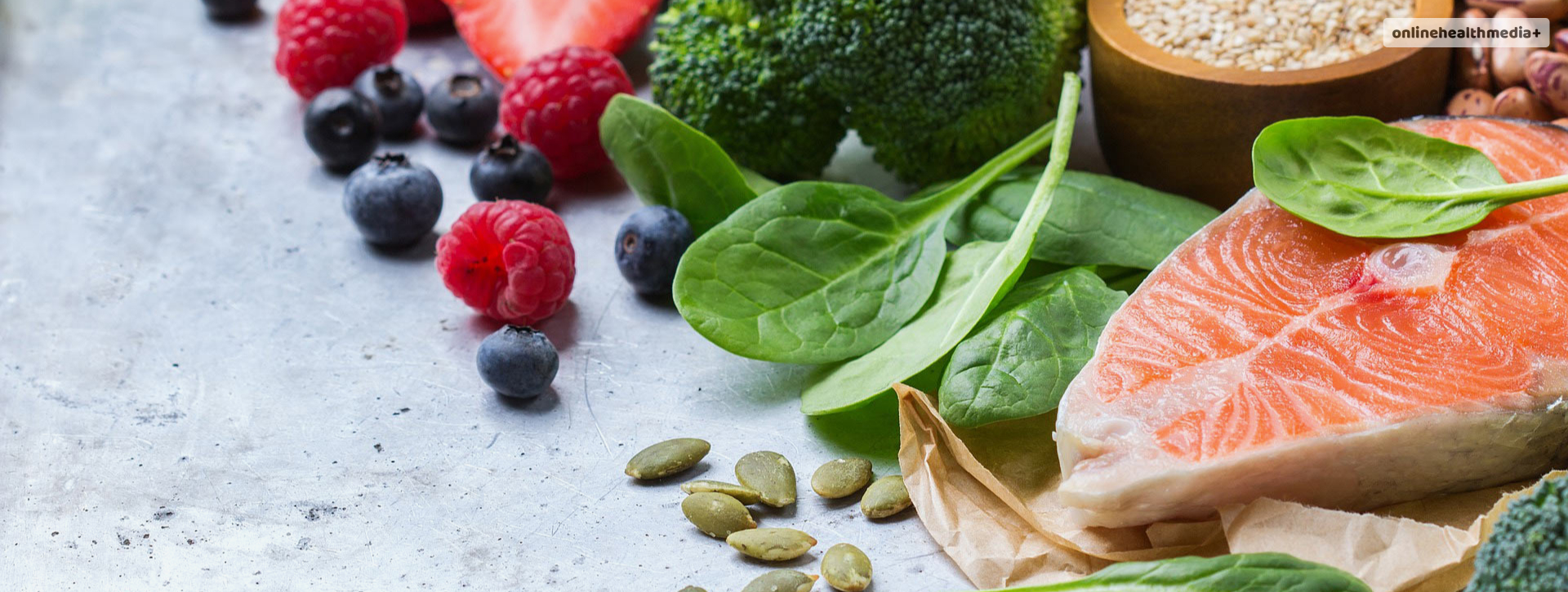Green Mediterranean Diet: Why Going Green For 7 Days Is Healthy
Most people in this world believe that they are unhealthy. Unfortunately, they just might be right because recent surveys do show that the rate of “unhealthy” people is increasing drastically across the board. This is where a good, green, and healthy diet, called the green Mediterranean diet, comes in.
So do you think you are unhealthy in your current state? Do you wish to completely change your health in seven days? If you want to, then read this post to give your health the green signal it needs to go green!
What Is A Green Mediterranean Diet?
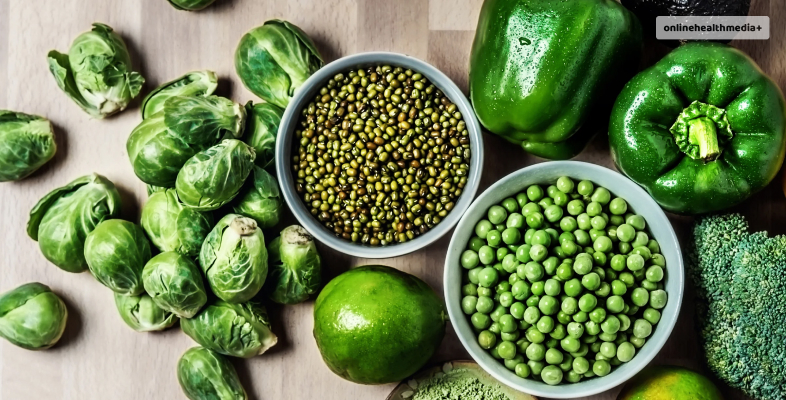
The Green Mediterranean Diet is a variation of the traditional Mediterranean diet, which is renowned for its health benefits and promotion of overall well-being.
This diet incorporates a greater emphasis on plant-based foods, particularly green, leafy vegetables, as well as other specific dietary choices that are associated with health and longevity.
Green Mediterranean Diet Vs Standard Mediterranean Diet: What’s The Difference?
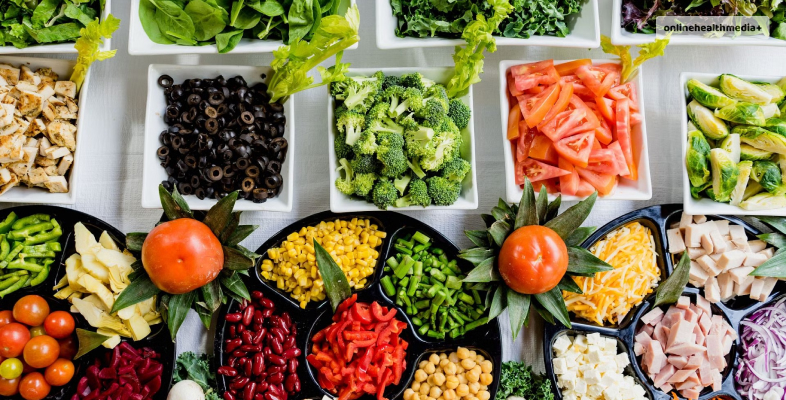
Let’s delve into the differences between the Green Mediterranean Diet and the Standard Mediterranean Diet in more detail:
| Difference | Green Mediterranean Diet | Standard Mediterranean Diet |
| Consumption OfLeafy Greens | The distinguishing feature of the Mediterranean Green Diet is its strong emphasis on green, leafy vegetables. These include spinach, kale, Swiss chard, collard greens, and other nutrient-dense greens. These vegetables are rich in vitamins, minerals, antioxidants, and fiber. | While the Standard Mediterranean Diet includes a variety of vegetables, it does not specifically emphasize green, leafy vegetables to the same extent. It promotes a broader spectrum of vegetables, including tomatoes, peppers, eggplants, and artichokes, among others. |
| Meat and Poultry Consumption | This variant of the Mediterranean diet places a stronger emphasis on plant-based proteins and significantly reduces the consumption of red meat and poultry. Plant-based proteins such as legumes, tofu, and tempeh play a more central role in this diet. | While the Standard Mediterranean Diet does encourage limiting red meat consumption and opting for lean protein sources like fish and poultry, it is not as restrictive as the Green Mediterranean Diet in terms of animal protein reduction. |
| Reliance on Olive Oil and Nuts | Both diets prioritize olive oil as the primary source of fat. However, this diet places additional emphasis on incorporating a variety of nuts and seeds like almonds, walnuts, and flaxseeds. These are rich in healthy fats, protein, and fiber. | The Standard Mediterranean Diet also promotes the use of olive oil but does not emphasize nuts and seeds to the same extent. While they are included, they are not as prominent as they are in the Green Mediterranean Diet. |
| Consumption of Red Wine | Similar to the Standard Mediterranean Diet, this diet allows for moderate consumption of red wine, which is rich in antioxidants like resveratrol. | Red wine in moderation is a common feature of both diets. However, it’s essential to note that excessive alcohol consumption is not recommended. |
| Range of Fruits | While fruits are part of this Mediterranean Diet, the emphasis is primarily on vegetables, particularly leafy greens. Fruits such as berries, citrus fruits, and apples are included but not as prominently featured. | The Standard Mediterranean Diet encourages the consumption of a wider variety of fruits, often as part of daily meals or snacks. |
| Herbs and Spices Used | Both diets incorporate a range of herbs and spices, such as basil, oregano, thyme, and garlic, for flavoring dishes and reducing the need for excessive salt or unhealthy seasonings. | The use of herbs and spices is a common practice in the Standard Mediterranean Diet as well. |
How Does the Green Mediterranean Diet Work?
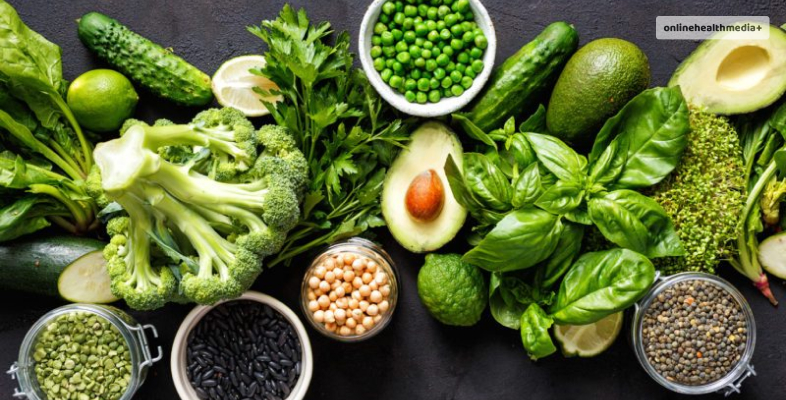
The Green Mediterranean Diet works by emphasizing certain food groups and dietary patterns that are associated with improved health outcomes. This diet is a variation of the traditional Mediterranean diet and focuses on incorporating nutrient-dense, plant-based foods, particularly green, leafy vegetables, as well as other specific dietary choices.
Here’s a detailed explanation of how this diet works:
1. Emphasis On Leafy Greens

The core principle of the Green Mediterranean Diet for fatty liver is to include an abundance of green, leafy vegetables in your daily meals. These vegetables, such as spinach, kale, Swiss chard, and collard greens, are packed with vitamins, minerals, antioxidants, and dietary fiber. This makes this diet similar to the vegan diet.
Leafy greens are nutrient-dense, meaning they provide a high concentration of essential nutrients while being relatively low in calories. They contribute to overall health by supplying vitamins like A, C, and K, as well as folate, potassium, and various phytonutrients.
2. Healthy Fats
Like the traditional Mediterranean diet, the Green Mediterranean Diet emphasizes the use of extra virgin olive oil as the primary source of fat. Olive oil is rich in monounsaturated fats, particularly oleic acid, which has numerous health benefits, including reducing the risk of heart disease.
This diet also encourages the consumption of a variety of nuts and seeds, such as almonds, walnuts, and flaxseeds. These foods provide healthy fats, protein, fiber, and micronutrients.
3. Plant-Based Proteins
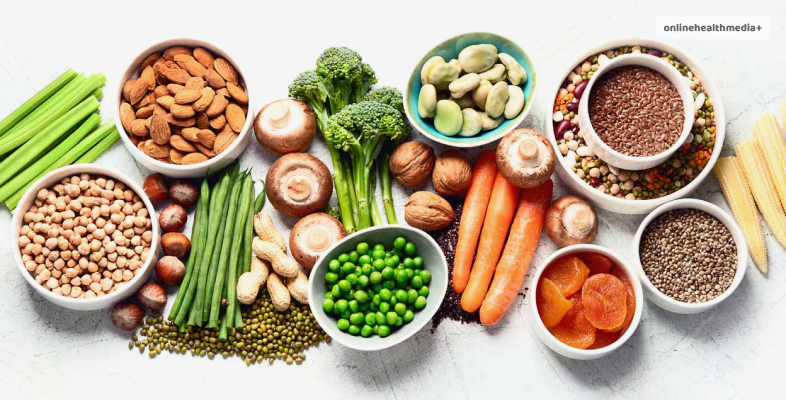
Legumes, including beans, lentils, and chickpeas, play a crucial role in the Green Mediterranean Diet as sources of plant-based protein and fiber. Soy-based products like tofu and tempeh can be incorporated for additional plant-based protein options.
While the diet places more emphasis on plant-based proteins, it also allows for moderate consumption of fish, particularly fatty fish like salmon, which provides omega-3 fatty acids.
4. Whole Grains
The diet promotes whole grains such as brown rice, quinoa, bulgur, whole wheat pasta, and whole-grain bread. These grains offer complex carbohydrates, dietary fiber, vitamins, and minerals, similar to the Gluten-free diet.
5. Fruits

While not as prominently featured as vegetables, fruits like berries, citrus fruits, and apples are included for their vitamins, minerals, antioxidants, and natural sweetness. The consumption of fruits here is similar to the Lipedema diet and the Hashimoto diet.
6. Herbs And Spices
A wide range of herbs and spices, including basil, oregano, thyme, and garlic, are used to add flavor to dishes without relying on excessive salt or unhealthy seasonings.
7. Moderate Consumption Of Red Wine:

Like the traditional Mediterranean diet, the Green Mediterranean Diet allows for moderate consumption of red wine. Red wine is enjoyed in moderation for its potential health benefits, particularly its resveratrol content, an antioxidant.
8. Reduced Meat And Poultry
The diet reduces the consumption of red meat and poultry, with a preference for lean protein sources like fish. This makes this the opposite of the cyclical ketogenic diet and the Dukan diet.
What Are The Benefits Of A Green Mediterranean Diet?

The Green Mediterranean Diet offers a variety of potential health benefits due to its emphasis on nutrient-dense, plant-based foods and healthy fats.
While it shares many advantages with the traditional Mediterranean diet, the added focus on green, leafy vegetables and specific dietary choices can provide unique advantages.
Here’s a detailed explanation of the potential benefits of the Green Mediterranean Diet:
1. Heart Health
The diet’s emphasis on extra virgin olive oil, nuts, and fatty fish rich in omega-3 fatty acids helps reduce the risk of heart disease. These components are known to improve cholesterol levels, lower blood pressure, and reduce inflammation.
In addition, the inclusion of potassium-rich foods like leafy greens and legumes can contribute to better blood pressure control.
2. Weight Management
The Green Mediterranean Diet’s focus on whole, unprocessed foods, high fiber content, and healthy fats can support weight loss or weight maintenance. Plant-based proteins like legumes are filling and satisfying, helping control appetite.
3. Antioxidant Protection
The diet’s wide variety of fruits, vegetables, herbs, and spices provides a wide range of antioxidants, which help combat oxidative stress and reduce the risk of chronic diseases.
4. Reduced Inflammation
The diet’s components, including olive oil and phytonutrient-rich vegetables and herbs, have anti-inflammatory properties that may lower the risk of chronic inflammation-related conditions.
5. Improved Blood Sugar Control
Whole grains, legumes, and fiber-rich foods promote steady blood sugar levels, which can be beneficial for those with or at risk of diabetes.
6. Enhanced Digestive Health
The diet’s emphasis on vegetables, fruits, legumes, and whole grains provides ample dietary fiber, which supports digestive health and regularity.
7. Cognitive Health
The inclusion of healthy fats, antioxidants, and omega-3 fatty acids may help protect cognitive function and reduce the risk of cognitive decline as individuals age.
8. Reduced Risk Of Chronic Diseases
The Green Mediterranean Diet recipes combine nutrient-dense foods. Reduced consumption of red meat is associated with a decreased risk of chronic diseases such as heart disease, stroke, certain cancers, and type 2 diabetes.
9. Longevity
As with the traditional Mediterranean diet, the Green Mediterranean Diet is associated with a higher likelihood of living a longer, healthier life due to its positive effects on overall health.
10. Sustainable Eating
Environmental Benefits: The diet’s emphasis on plant-based foods aligns with sustainable and eco-friendly eating patterns, as plant-based diets typically have a lower environmental impact compared to diets rich in animal products.
11. Better Nutrient Intake
Comprehensive Nutrition: The diet encourages a wide variety of nutrient-rich foods, helping individuals meet their daily nutritional requirements for vitamins, minerals, and other essential nutrients.
The 7-Day Green Mediterranean Diet Plan To Follow
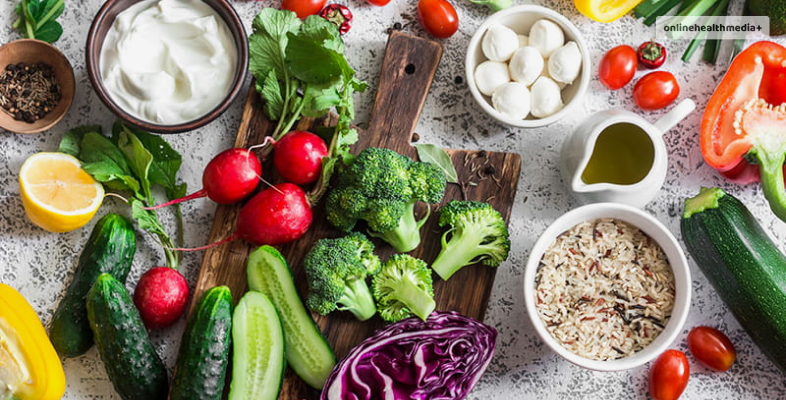
Here’s a 7-day Green Mediterranean Diet meal plan suitable for people of all ages. This plan focuses on incorporating nutrient-dense, plant-based foods, healthy fats, and lean proteins, with an emphasis on green, leafy vegetables.
Day 1
- Breakfast: Greek yogurt topped with fresh berries, sliced almonds, and a drizzle of honey. In addition, add a whole-grain toast with a thin spread of almond butter.
- Lunch: Spinach and chickpea salad with cherry tomatoes, cucumbers, red onion, and a lemon vinaigrette. Additionally, you can have this with a slice of whole-grain pita bread.
- Snack: Baby carrots and cucumber slices with hummus.
- Dinner: Baked salmon with a Mediterranean herb and olive oil marinade. Sautéed spinach with garlic and a squeeze of lemon. Add some quinoa pilaf with chopped parsley if you want to.
Day 2
- Breakfast: Scrambled eggs with spinach and diced tomatoes. Whole-grain toast with avocado spread.
- Lunch: Lentil soup with a side of mixed greens and a sprinkle of feta cheese. Whole-grain crackers will go well with this as well.
- Snack: Mixed nuts and a small apple.
- Dinner: Grilled chicken breast marinated in olive oil, lemon, and oregano. Add some steamed broccoli with a drizzle of olive oil and a sprinkle of pine nuts. Have brown rice as well.
Day 3
- Breakfast: Spinach and mushroom omelet with a side of sliced oranges.
- Lunch: Quinoa and black bean salad with diced bell peppers, corn, and a lime-cilantro dressing. Serve yourself with whole-grain tortilla chips.
- Snack: Sliced cucumbers and cherry tomatoes with tzatziki sauce.
- Dinner: Baked cod with a tomato and olive tapenade. Sautéed kale with garlic and red pepper flakes and whole-grain couscous will mix well in this palate.
Day 4
- Breakfast: Greek yogurt parfait with layers of granola, sliced strawberries, and a drizzle of honey.
- Lunch: Spinach and feta stuffed bell peppers. Add a whole-grain roll as well.
- Snack: Celery sticks with almond butter.
- Dinner: Chickpea and vegetable stir-fry with a ginger-soy sauce. Have brown rice too.
Day 5
- Breakfast: Spinach and feta breakfast wrap with scrambled eggs in a whole-grain tortilla.
- Lunch: Greek salad with romaine lettuce, cucumbers, olives, cherry tomatoes, feta cheese, and a balsamic vinaigrette. Add whole-grain pita bread to your plate as well.
- Snack: Sliced pear and a handful of walnuts.
- Dinner: Grilled vegetable platter with eggplant, zucchini, and red onion. Additionally, add lentil and quinoa salad with fresh herbs and lemon dressing.
Day 6
- Breakfast: Smoothie with spinach, banana, almond milk, and a scoop of protein powder.
- Lunch: Spinach and white bean soup with a side of whole-grain crackers.
- Snack: Greek yogurt with a drizzle of honey and a handful of pistachios.
- Dinner: Baked trout with a Mediterranean herb rub. Sautéed Swiss chard with garlic and olive oil. Add quinoa with roasted red peppers and pine nuts as well.
Day 7
- Breakfast: Oatmeal topped with sliced kiwi, chopped almonds, and a sprinkle of cinnamon.
- Lunch: Whole-grain pasta salad with cherry tomatoes, artichoke hearts, spinach, and a pesto dressing.
- Snack: Sliced bell peppers and cucumber rounds with tzatziki dip.
- Dinner: Grilled vegetable and chickpea kebabs with a tahini dressing. You may also add whole-grain couscous with lemon zest and fresh herbs.
Conclusion
The Green Mediterranean Diet is a variation of the traditional Mediterranean diet that places a stronger emphasis on certain foods, including green, leafy vegetables, a variety of nuts and seeds, and reduced meat and poultry consumption.
By following this diet, individuals aim to improve their overall health, reduce the risk of chronic diseases, and promote longevity. The diet’s emphasis on plant-based foods, healthy fats, and nutrient-dense ingredients aligns with the principles of a balanced and healthful eating pattern.
While following the 7-day diet plan, you may adjust portion sizes as needed based on individual energy requirements and consult with a healthcare provider or registered dietitian if you have specific dietary concerns or health conditions.
Also Read
- Fund Your Business With A Medical Business Loan.
- The Benefits Of Physiotherapy For Chronic Pain Management.
- Healing From Within: Harnessing The Body’s Energy In Recovery.
